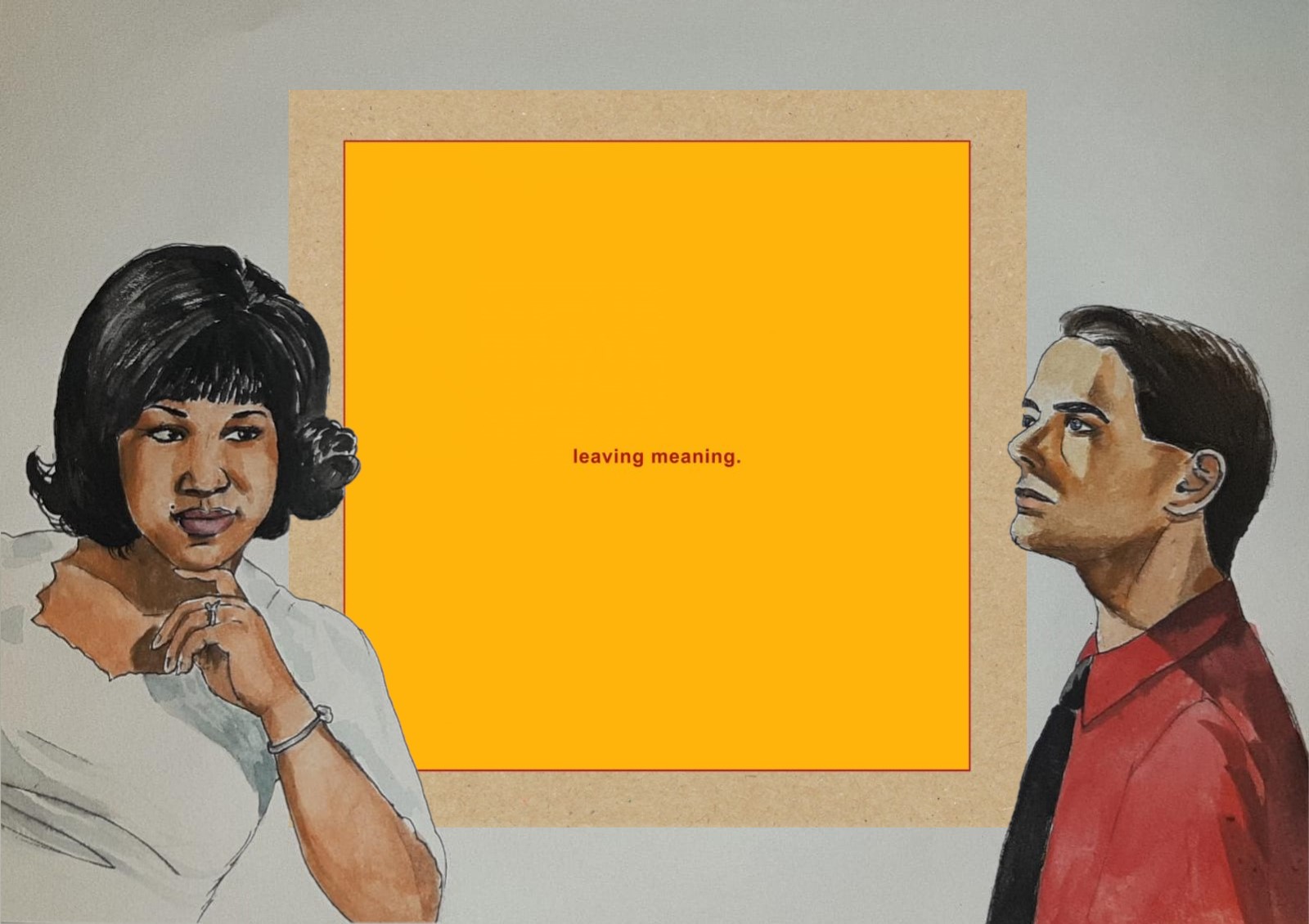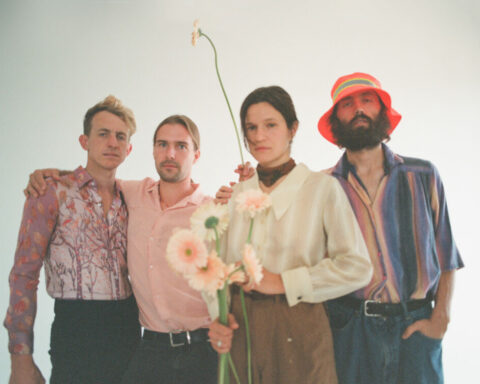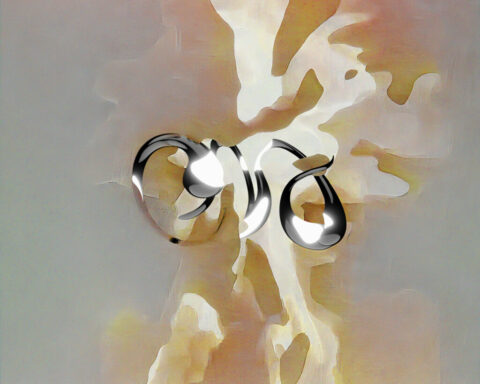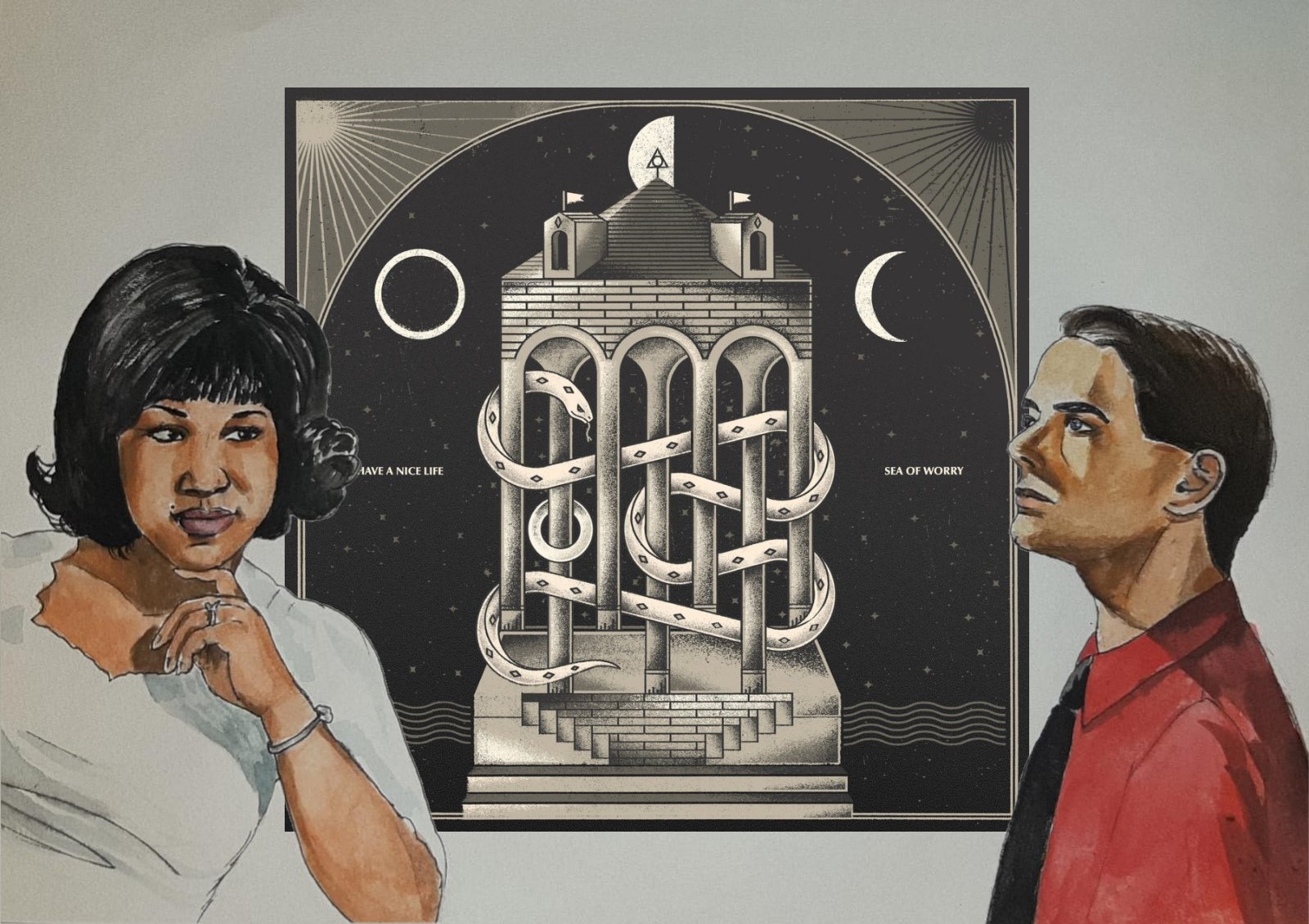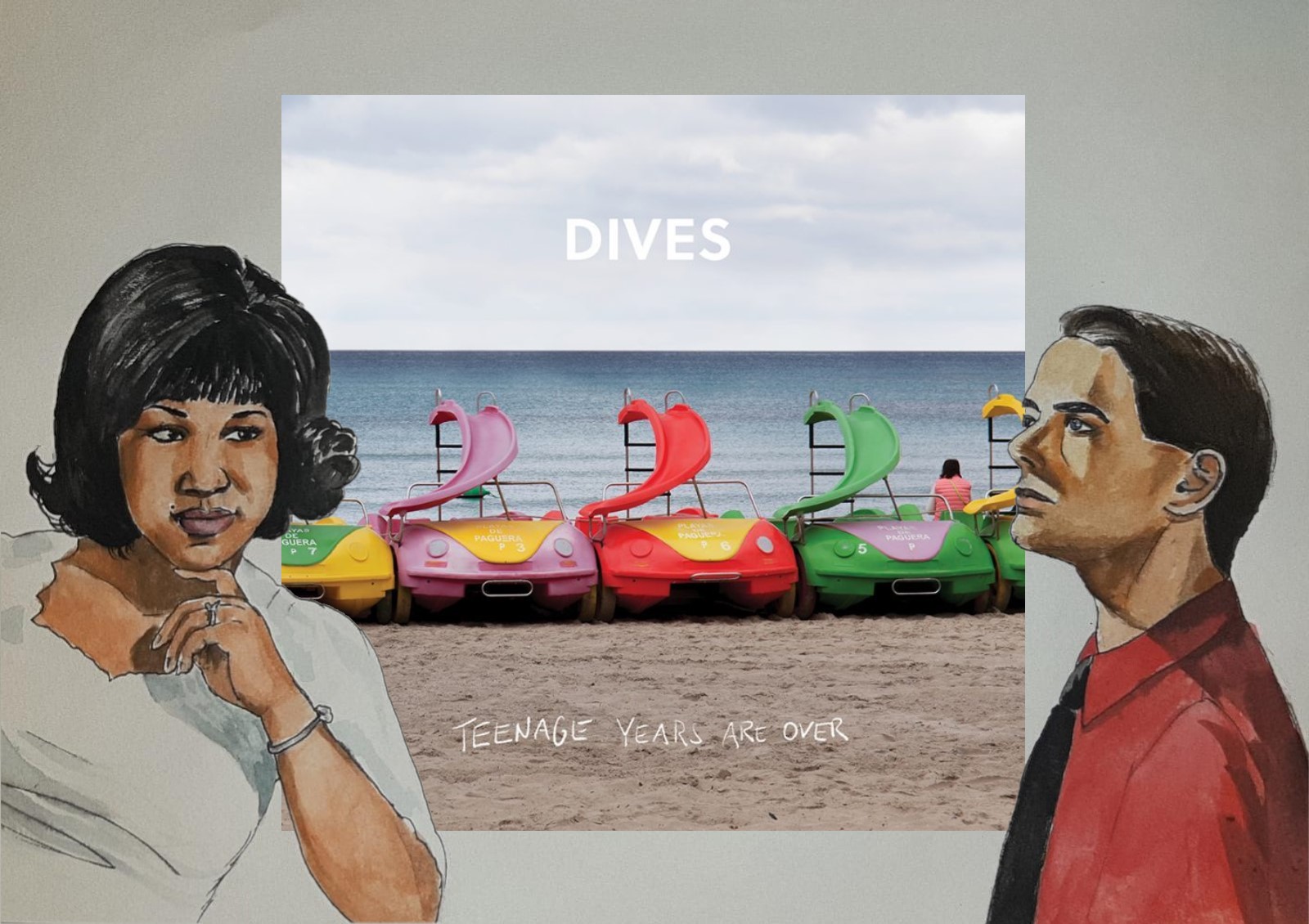
Swans – leaving meaning. (Young God Records 2019)
Post-Rock / Experimental Rock / Gothic Country | USA
Earlier this year, Michael Gira has announced that he will once more, figuratively speaking, “kill Swans”, completely re-forming the band’s lineup and thus putting a symbolic end to what was arguably the band’s most critically acclaimed creative cycle. With the infamous The Seer (Young God Records, 2012) – To be Kind (YGR, 2014)– The Glowing Man (2016, YGR) trilogy as its predecessor, leaving meaning. had big shoes to fill, garnering much anticipation for the latest Swans rebirth.
As nothing. There is no self
From the very beginning, it’s clear that leaving meaning. is a very different animal. The opening instrumental track gently introduces a blissful, open, almost enchanting atmosphere, a far cry from the thick, caustic, oppressive air of previous Swans releases. This tone-setter seamlessly transitions into „Annaline“, a beautiful chamber folk love song, much in the vein of early Angels of Light releases. The band seems to be sticking to their post-rock direction, however with a more traditional interpretation; the instrumentation is almost similar to something you might expect on Sigur Ros’s Valtari (Parlophone, 2012), with its distant, glittering piano tones. Gira’s vocals introduce a very different frontman from the one we’ve gotten used to hearing – in this incarnation, he sounds more open, vulnerable and tender than he has in a while, perhaps even more so than in his softer Folk and Goth Country days. The opening verse introduces the album’s main lyrical theme of (non)existence, and the urge to make the experience of existing material or provable in some way (“How is it true that we even exist?”), a sentiment that will be repeated throughout the album. However, here it is expressed without pseudo-intellectual pretentiousness, but with a genuine sense of awe, an acceptance of one’s powerlessness in the face of such a task. The track ends with what almost sounds like the titular Annaline being gently lulled to sleep, and we jump cut into Dana Schechter’s tense bass line on „The Hanging Man“. The constant bass groove acts as the main structural spine of the song, most of the other instrumentation dancing around it. Here is where the album most obviously calls back to The Glowing Man, its tone colder and spacier, with Gira’s (by this point) usual distant chants and shouts. The chorus confidently asserts one’s nonexistence, breaking the “I am” mantra with a decisive, shouted “NOT” . The lyrics “I am not what I just thought”, “Who is the watcher watching this thought / Whose thought is a thought that is not what he thought” challenge the perceived connection between thought and self, (or rather, thought and existence of the self), perhaps playing on the Cartesian maxim of “I think, therefore I am”.
For the fourth track of the album we’re treated to a very different version of a track of the same name off of Love of Life (YGR, 1992). Lyrically, the song hails from a bygone era of Swans, with themes of social decay discussed in more or less concrete terms, the overcrowded cities and the murderous presidents. Tonally, however, the leaving meaning. version paints a very different picture: a slow, sparse, folk ambient with a distant accordion veering in and out of earshot, painting a picture of a barren, desolate world; a far cry from the original version’s dynamic, pummelling protest. The consistently dreary atmosphere is broken up only by the epic crescendos on the choruses, building on layers of instrumentation and choral vocals. This tonal shift can in and of itself be interpreted as an entirely new social commentary, with the ending lyrics of the last verse – “Everything human’s necessarily wrong” – sounding even more decidedly hopeless, but also tying in with another one of leaving meaning.’s overarching lyrical themes: the material, the human, the bodily, the fleeting vs. the eternal, the immaterial, the spiritual (a theme Gira has extensively explored during Swans’ entire career).
Worship Sunfucker
On the title track the album’s main philosophical statement gets tackled head-on, with the entire opening verse exploring the contradictions inherent to knowledge and experience over a sparse, floating ambient, Gira’s voice sounding more and more distant and disembodied as the track progresses. Aptly titled, „leaving meaning.“ embraces the acceptance of meaninglessness and of one’s nonexistence, as suggested by the lyrics “No place – let’s go!”
After „leaving meaning.“ fades out, we’re treated to Gira ritualistically chanting lyrics about surrendering to some kind of perverse deity, the titular „Sunfucker“. The first half of the track marches on guided by a thin guitar rhythm and shouted choral vocals provided by Anna von Hausswolff (with sister Maria von Hausswolff), with a wall of noise slowly mounting in intensity. As the droning, noisy instrumentation reaches its climax and subsequently dies down after the second chorus, the song gets a second wind with drum beat and a mantra of “Believer, believer, believe or not”, with Gira periodically interjecting with gibberish that morphs into “a little man”. A very plainly delivered “Why am I on this Earth?” connects the song to the album’s overarching theme; however, this time we’re seemingly provided with an answer – “I worship Sunfucker”, playing around with the idea of a higher power as provider of meaning and answers to difficult questions.
„Cathedrals of Heaven“ is a bluesy, Gothic Country piece that juxtaposes visceral images of bodily decay and physical connection with religious and existential imagery (“If God is around/Ah, it’s Him that we kiss”/ “I am asking you this/Who made us like this?”). After its swaying rhythm fades out, it feels like the listener has floated into space, with „The Nub’s“ sparse instrumentation seemingly veering in and out of earshot. Complementing the song’s ethereal mood are Baby Dee’s eerie, almost spoken vocals, describing some kind of weightless, floating state. After a fairly underwhelming first leg, the song’s instrumentation picks up in intensity, introducing a brass section and what sounds like an organ near the end, finishing off with a satisfying crescendo. A similar songwriting “blueprint” is also employed on the album’s lead singe, „It’s coming, it’s real“. The track opens with a distant guitar and piano, with ethereal, choral vocals (again provided by the Hausswolff sisters) adding an extra layer of tension and cohesion to the otherwise sparse, folksy instrumentation, which again feels like an Angels of Light callback. The crescendo really starts to kick in a little after the song’s midpoint, again building layers of more intense vocals and instrumentation. By the end, the song feels celebratory, almost triumphant, imploring to reach out, rage on and rise up, embrace formlessness and mindlessness.
Flex your meditation
Some new things fades in almost as though it’s already been playing for a minute, with a complete drum, bass and guitar rhythm, that mostly stays constant for the song’s entire duration. There’s an interesting lyrical callback to Swans’ previous albums (“There’s a kneeling/Glowing man/There’s a rope/Reaching up”), perhaps implying some conceptual connection between the three albums, beyond the undeniable sonic similarities. After the finishing mantra of “Let him out” abruptly ends, we are introduced to one of the album’s most enchanting and sonically rich moments on „What is this?“. The tone of the song is warm, idyllic and celebratory, almost bordering on sentimental, solidifying the album’s central thesis as a celebration and embrace of the inherently meaningless and fleeting nature of human experience, opting out of heady discussions of that which cannot be proven and revelling in the tangible, the present, the human and the connection to other humans. Although the song feels like a strong closing statement, the album’s actual closer it the perfect send-off to the hour-and-a-half journey. Essentially, Gira delivers a spoken word verse with a faint, bluesy rhythm section, but the experience feels fragmented and chaotic like a fever dream, with layers and layers of the speech talking over each other. A segment of the lyrics is reminiscent of Allen Ginsberg’s Footnote to Howl, declaring the sanctity of the mundane and worldly, thus perfectly bringing a satisfying conclusion to the album’s central questions.
leaving meaning. is a meditative, sonically diverse and thought-provoking record. Although Swans indulge in more traditional forms of post-rock and occasionally re-hash ideas they’ve already touched on, the album provides a stimulating, expertly structured sonic journey with very few dull moments.
Favorite track: Annaline; Sunfucker; It’s Coming It’s Real; What’s This?; My Phantom Limb
Least favorite track: The Nub; Leaving Meaning
8.5/10
